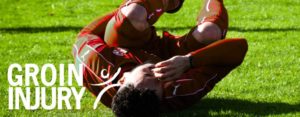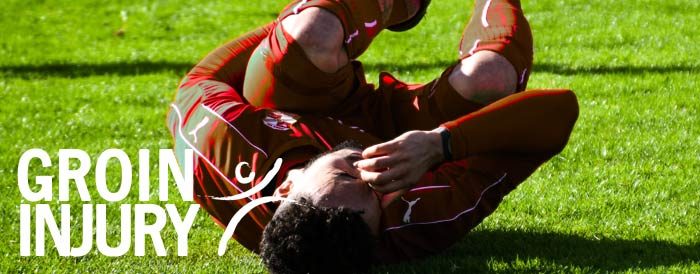Groin Injury
Groin injuries are a common injury amongst active people, as well as those unlucky enough to strain the area by falling, tripping, or getting their leg caught on something. It is usually characterized by pain along the inner thigh where the muscles are thought to have been over-stretched. It also has a reputation for being a “difficult” injury to recover from, although this reputation is somewhat undeserved. Sometimes the nature of the injury is incorrectly assumed from the beginning, which can lead to ineffective treatments and prolonged pain. Groin pain following a strain can result from several different injury mechanisms, each of which requires a different management approach.
Groin or inner thigh pain can be a manifestation of a hip joint problem. The hip is a ball and socket joint that is lined with cartilage and surrounded by other supportive soft tissue for protection. Sometimes when the groin is “strained”, the soft tissue can become pinched and cause pain. The resulting pain comes from compression of this tissue by normal hip movements. Usually, though, the hip can be “unlocked” by moving it in the proper direction, which can be found under the supervision of a well-trained physiotherapist, and relief of pain will quickly follow.
Another possibility is that the ligaments and tendons of the groin take the majority of the force rather than the muscles themselves. These tissues have notoriously poor blood supplies and so don’t receive the nutrients and support needed for good quality healing. Therefore, they can remain painful for weeks or even months if the proper intervention is not undertaken. However, they are quite responsive to tension or resistive forces, and with a specific exercise program, they can be remodeled slowly to decrease the pain and regain the strength. This does require discipline, as the changes will occur slowly over a number of weeks, but should ultimately result in recovery.
When a groin strain primarily affects the muscular tissues, which is what most people assume groin injuries to be, healing will usually proceed over a number of weeks, because of the aforementioned good blood supply. As long as the muscles are not over-stressed during this healing period, and movement and strength are gradually regained as the symptoms allow, the recovery will proceed uneventfully.
For all the different injury mechanisms listed above, once full movement and strength of the area have been attained, treatment will focus on recovering a level of function required by the person’s work or athletic activities. For example, a physiotherapist can guide a tennis player to safely progress and return to running, cutting, lateral movements, and lunging, all of which are necessary components of the sport.
In summary, the crux of the matter with groin injuries is to determine what kind of problem it is. To say you have a “groin injury” on its own does not say enough for a healthcare professional to be able to treat it effectively; they have to be able to understand it on a deeper level to direct the appropriate treatment. The physiotherapists at York Rehab possess the assessment skills necessary to diagnose such injuries and help you to recover as efficiently and effectively as possible.
Comments are closed.







